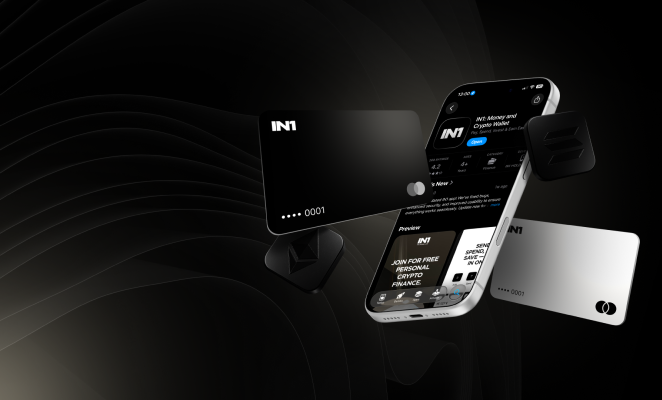

Our client is a retailer of modern premium furniture, lighting, and accessories based in Philadelphia, Pennsylvania. The company supplies a wide range of modern furniture from Italy, Spain, and other European countries.
The format is a showroom in Philadelphia and an online store with delivery across the United States. The Client’s name is under NDA.
.avif)
Our client has been working effectively with the PPC Promodo team for several years. However, recently they have faced a decrease in conversion and a drop in sales for no obvious reason.
We divided the solution of the client's problem into several stages:
We immediately identified a drop in the entire category of modern furniture in the United States in the analytical panels. Global demand for furniture fell by 24% in 2023. Traffic in the niche of modern premium furniture in the United States fell by 18% over the year.
The main reasons for the crisis in the US furniture industry:
[[SLIDER-START]]



[[SLIDER-END]]
Such events are often referred to as the "black swans"*.
A "black swan" is an unexpected event that has a major effect. It's something rare, hard to predict, and usually has significant consequences. The term is often used in economics and finance to describe unpredictable events that go beyond what is normally expected and can potentially cause serious disruptions.
We can’t do much about such major events and their effect on purchasing power. But we can look for opportunities for the business to stay afloat and even grow in those product categories that are in demand even in a crisis.
First, we analyzed the traffic of competitors and used the insight to create recommendations for the development of search channels.
This analysis helped us notice the following insights:

Then we moved on to competitors’ communication strategy. The goal was to identify the areas where competitors position themselves and find out where our client could potentially stand among them. We've develope a positioning map for the luxury furniture industry.
We looked into which categories remained in demand and which have declined the most. That helped us identify which furniture categories and for which rooms should be emphasized in the upcoming advertising campaigns.
[[SLIDER-START]]


[[SLIDER-END]]
We also researched the services offered by competitors to find the unique ones among the players, and also the must-have services in the industry. We compared it with the services offered by the client and provided a list of recommendations on how to improve the product range and the service.

The classic method of recruiting, for example, through the research agencies, was not achievable due to the complexity of the audience (VIP segments). We solved this problem by launching a targeted Facebook campaign with a reward for completing an interview.
We targeted the American customers of the brand and customers of competing brands from the states of New York, Philadelphia, and Florida — the states that are key to the client's business. The target audience was asked to complete a short form with only a few questions:
Then we wrote to the selected group of respondents via the provided email or WhatsApp.
There was even 1 conversion from the respondent search campaign, which made the lead campaign pay off, as there was one conversion with a revenue of $5,000.
During the interviews, we guided respondents through their customer journey, asking them all the details that they could remember. All the questions were about real purchasing experiences in their past, based on the Jobs to be done* methodology.
*The Jobs to Be Done methodology is a framework used to understand the specific needs and goals that customers are trying to achieve when purchasing a product or service. It focuses on the underlying 'job' a customer is hiring a product to do, rather than just the product itself.
Mapping out the results in The Consumer Decision Journey.
In this map, we described in detail the path of our consumer — from the moment when a person does not even know about the product and does not need it to the experience of interaction after the purchase.
This helped to answer questions such as how long the furniture buyer's journey is, and how omnichannel it is. We could visualize at what stages people were emotionally uplifted, and at what point in the journey the choice of furniture caused frustration.
We realized that respondents expect to use furniture for 7-10 years.
How to bring consumers back to the store more often? This is a challenge for our client as a business.

After in-depth analysis and research, our client received:
Initially, the client described the core of their audience as "lawyers and dentists aged 40-60". We immediately formed a hypothesis: perhaps this is not the only audience that would be interested in the furniture.
Already at the first stages of recruiting respondents, we saw that there were quite a few consumers aged 25-40 years old - and they all had relevant experience in choosing and buying furniture, with their own needs and criteria. These are the so-called "young money" representatives — young employees of the financial sector, large corporations, technology companies, and creative specialties.
When we checked the traffic in the niche, we confirmed this hypothesis with data — we saw a significant percentage of the audience aged 25-40.
.avif)
In the consumer research, we also shed light on the segment of "non-category consumers " - that is, those who do not yet buy modern premium furniture, but this audience represents potential for the client: by the time they move from mid-price furniture to premium furniture, they should already have formed knowledge of the brand.
Therefore, contacting this audience even before they have formed a need for premium furniture is a strategically important decision for the business.
What we did:

We saw that the communication of both our client and market players is now very product-based - it is conventionally photos of furniture. On the contrary, we proposed showcasing not only furniture but also the atmosphere and real people in authentic interiors where they mix different styles and add antiques, unlike the restrained and emotionless product photoshoots of our competitors.
💡 The interviews showed that the consumer's task with premium furniture is not so much functional ("a sofa to sit on, a bed to sleep in"), but rather emotional: the interior is perceived as an extension of the homeowner's personality. Buyers combine it with vintage pieces, choose a style, and then invite guests to show off their new furniture. They may order the mahogany coffee table with a rose carved out of wood because they literally fell in love with it and are willing to wait 3 months for it to be made. They look for "statement pieces" in luxury furniture stores that express their taste and style. So the criteria in this niche are more emotional than weighted and rational.
Furniture is thrown away not when it is objectively out of order, but when it does no longer “bring joy”.
We advised the client to shift the focus of communication from just the quality of the furniture to the emotional need for self-expression that consumers fulfill when they buy modern premium furniture.

When analyzing competitors' traffic channels, we noticed how significant a social traffic channel Pinterest is in the furniture category.
💡 This was also confirmed by American consumers in our interviews: they called Pinterest an important auxiliary source of information and a source of inspiration in the process of choosing furniture.
The client had a Pinterest account but did not actively use it. Now they apply the recommendation to focus on Pinterest and is currently working on implementation with Promodo's PPC department.

The client also received a ready-made media split from us and the SEO department - a clear action plan for digital channels: which ones to use, in what priority, details on how to use each channel and what metrics to track.
Our client has a fairly strong service component - this came out of in-depth interviews, because it is consumers who note the service component as their strength.
They have a fairly large package of free services that are already included in the price of the furniture:
Given the context in which the market and consumers are operating, the mere availability of these services could be perceived as an advantage that would allow consumers to save money indirectly.
However, after analyzing the client's communication, we saw that the brand did not communicate its services sufficiently, so our recommendation was to include these benefits in the brand's value proposition and use them in communication.
The existing assortment covers the needs of the existing audience (40-60) and the new audience (25-40). We saw that, despite the crisis, living room, dining room and bedroom furniture, as well as outdoor furniture, remain relevant for these segments.
However, the existing product range did not cover the needs of "non-category consumers" - those who only fit into the category. Solution:
Case studies
Check out how we help companies like yours overcome challenges and rise to the next level.

Cost Per Action
Work period

.png)
Instagram followers
Facebook followers
Work period
